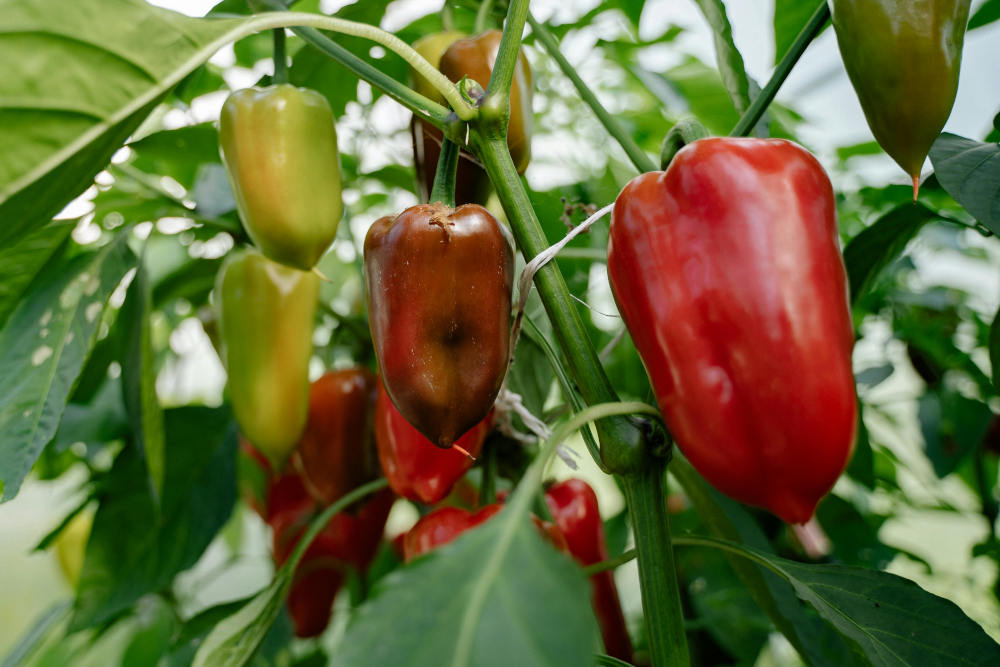
Growing your own peppers from seed is one of the most rewarding gardening experiences—especially in USDA Hardiness Zone 5, where the growing season is short and warm-weather crops need a head start. Peppers, whether sweet bell peppers or hot chili varieties, thrive in warm soil and long summers. But if you’re gardening in zone 5, starting seeds indoors is essential to ensure a bountiful harvest.
This article covers everything you need to know about when to start pepper seeds indoors in zone 5, how to grow strong seedlings, when to transplant them outdoors, and tips to ensure success in a cooler climate.
Panaprium is independent and reader supported. If you buy something through our link, we may earn a commission. If you can, please support us on a monthly basis. It takes less than a minute to set up, and you will be making a big impact every single month. Thank you!
Understanding Zone 5 and Pepper Requirements
Zone 5 includes regions with average minimum winter temperatures ranging from -20°F to -10°F (-29°C to -23°C). The last frost date typically falls between April 15 and May 15, depending on your specific location.
Peppers are tender annuals. They do not tolerate frost and require warm soil and air temperatures to grow and fruit well. Ideally:
-
Soil temperature for transplanting: 65–75°F (18–24°C)
-
Daytime temps: above 70°F (21°C)
-
Nighttime temps: consistently above 50°F (10°C)
Because peppers grow slowly, you’ll need to start them indoors well in advance of the last frost.
When to Start Pepper Seeds Indoors in Zone 5
General Rule:
Start pepper seeds 8 to 10 weeks before your average last frost date.
If your last frost date is May 10 (common in many zone 5 areas), count backward:
-
10 weeks before May 10 = February 29
-
8 weeks before May 10 = March 14
Best window to start pepper seeds indoors in zone 5:
👉 Late February to mid-March
This timing allows your pepper seedlings to develop strong roots and stems by the time they're ready to be hardened off and transplanted outside in late May or early June.
Why Starting Peppers Early Matters in Zone 5
Peppers need a long, warm growing season to produce mature fruit. In zone 5, the outdoor season typically runs from mid-May to mid-September, which can be too short for some pepper varieties if you sow directly outdoors.
Starting seeds indoors gives your plants:
-
A 10–12 week head start
-
Time to flower and set fruit earlier
-
Better resistance to early pests and cold snaps
-
Greater yield before fall frost
Choosing Pepper Varieties for Zone 5
When selecting pepper seeds, consider how long the variety takes to mature. Look for:
-
Shorter days to maturity (60–75 days) for cooler zones
-
Early-maturing or compact types
Recommended Sweet Peppers:
-
‘Ace’ – 50–60 days
-
‘King of the North’ – 68 days
-
‘California Wonder’ – 75 days
-
‘Islander’ – 70 days (colorful and productive)
Recommended Hot Peppers:
-
‘Jalapeño Early’ – 60–65 days
-
‘Hungarian Hot Wax’ – 70 days
-
‘Cayenne Long Slim’ – 70–75 days
-
‘Thai Hot’ – 75 days
🌶️ Note: Super hot varieties like habaneros or ghost peppers may require up to 100+ days, so they must be started on the earlier side (late February) and grown in containers or greenhouses in zone 5.
How to Start Pepper Seeds Indoors: Step-by-Step
1. Gather Your Supplies
-
High-quality pepper seeds
-
Seed trays or small pots with drainage
-
Seed starting mix (light, sterile, well-draining)
-
Grow lights or a bright window
-
Heat mat (optional but highly recommended)
-
Humidity dome or plastic wrap
-
Plant labels
2. Prepare the Growing Medium
Use a sterile seed starting mix, not garden soil or potting soil. Moisten the mix before filling containers—aim for the consistency of a wrung-out sponge.
3. Sow the Seeds
-
Plant 1/4 inch deep
-
Place 1–2 seeds per cell or pot
-
Cover lightly with soil and press gently
4. Provide Bottom Heat
Peppers germinate best at 75–85°F (24–29°C). Using a seedling heat mat can improve germination rates and speed.
5. Maintain Humidity
Cover trays with a plastic dome or plastic wrap to hold moisture and warmth until germination.
6. Light Requirements
Once seedlings emerge:
-
Remove the cover
-
Place under grow lights for 14–16 hours per day
-
Keep lights 2–3 inches above seedlings to prevent leggy growth
Without sufficient light, seedlings become weak and spindly.
7. Water Carefully
-
Keep soil evenly moist, not soggy
-
Water from the bottom to prevent damping off
-
Ensure proper drainage
8. Fertilize Gently
Once true leaves appear, feed with a half-strength liquid fertilizer every 10–14 days to encourage healthy growth.
Potting Up: Transplanting to Larger Containers
After 3–4 weeks, pepper seedlings often outgrow their starter cells. Transplant them into 3- to 4-inch pots with a quality potting mix.
This gives them room to develop a robust root system before being moved outside.
Hardening Off: Preparing for the Outdoors
About 7–10 days before transplanting outdoors, harden off your seedlings:
-
Start by placing them outside in filtered sunlight for 1–2 hours
-
Gradually increase time outdoors and light exposure each day
-
Avoid cold, windy, or rainy days during this transition
Hardening off helps prevent transplant shock.
When to Transplant Peppers Outdoors in Zone 5
Do not rush to plant peppers outdoors after the last frost. They are very sensitive to cold.
Wait until:
-
Night temps are consistently above 50°F (10°C)
-
Day temps are above 70°F (21°C)
-
Soil temperature is at least 65°F (18°C)
In zone 5, this typically means late May to early June.
Use black plastic mulch or raised beds to help warm the soil early.
Outdoor Transplanting Tips
-
Space plants 18–24 inches apart
-
Use a balanced fertilizer or compost
-
Water deeply after planting
-
Apply mulch to retain moisture and suppress weeds
-
Use row covers or cloches in early weeks to retain heat
Troubleshooting: Common Pepper Seed Starting Problems
| Problem | Cause | Solution |
|---|---|---|
| Seeds not germinating | Too cold or too dry | Use heat mat and maintain humidity |
| Leggy seedlings | Not enough light | Lower grow lights closer to plants |
| Yellowing leaves | Overwatering or nutrient deficiency | Improve drainage, fertilize lightly |
| Stunted growth | Pot-bound roots or cold temperatures | Pot up and increase warmth |
| Wilting seedlings | Damping off from overwatering | Improve airflow, don’t overwater |
Tips for Growing Peppers Successfully in Zone 5
-
Start seeds indoors by March for a strong head start
-
Use a heat mat for faster germination
-
Pot up seedlings if they outgrow their containers
-
Don’t rush transplanting—wait for warm nights and soil
-
Harden off slowly before transplanting outdoors
-
Fertilize regularly once plants are established
-
Support heavy fruiting plants with cages or stakes
-
Harvest regularly to encourage continued production
Final Thoughts
Starting pepper seeds indoors in zone 5 is not just a good idea—it’s essential for a successful crop. By starting seeds indoors 8 to 10 weeks before your last frost, using proper lighting and warmth, and transplanting only after temperatures are reliably warm, you set your peppers up for a long, productive season.
Whether you love sweet bell peppers for stuffing or fiery jalapeños for salsa, the right start will lead to flavorful rewards all summer long.
Was this article helpful to you? Please tell us what you liked or didn't like in the comments below.
About the Author: Alex Assoune
What We're Up Against
Multinational corporations overproducing cheap products in the poorest countries.
Huge factories with sweatshop-like conditions underpaying workers.
Media conglomerates promoting unethical, unsustainable products.
Bad actors encouraging overconsumption through oblivious behavior.
- - - -
Thankfully, we've got our supporters, including you.
Panaprium is funded by readers like you who want to join us in our mission to make the world entirely sustainable.
If you can, please support us on a monthly basis. It takes less than a minute to set up, and you will be making a big impact every single month. Thank you.































0 comments